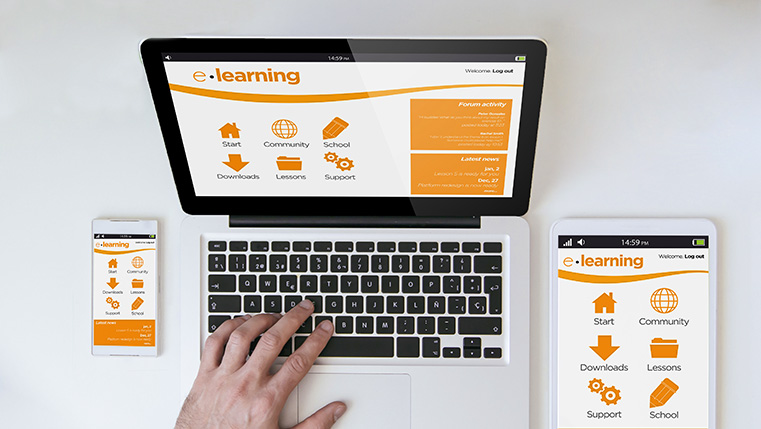Gamification: The Right Reasons To Implement It in Your Training
In the last few years, the concept of gamification has been used left, right and centre. In this blog, we’ll seethe right reasons for implementing it.

“Fools rush in where angels fear to tread”
It is not uncommon for a learning initiative such as gamification to be used for the wrong reasons, and subsequently, fail miserably. Usually when something goes wrong, the impulse is to blame the delivery method – “games don’t teach”, “the effect of gamification wanes quickly”, or “gamification is just a gimmick” – ignoring the fact that the single biggest contributor to failure is undertaking the initiative for the wrong reasons.
Avoiding costly mistakes and investments in games is significant, especially for business organizations. Fail too many times and it’s highly likely that the idea of using the mechanism for learning quickly becomes a “gimmick” and is discredited, eventually falling out of favor. On a more serious note, when poor choices are made, jobs can be lost and careers stymied.
Here are some wrong reasons to use gamification:
- “Everyone is doing it.”
- “It’s easy to design them.”
- “Gamification is cool.”
So what’s the solution? How can you avoid messing up your gamification initiative?Well, the first step is the only step you need -undertake it for the right reasons. Let’s take a look at those reasons.
Creating interactivity in learning delivery
Almost everyone from the learning and development fraternity has come across a boring, mind-numbing e-learning course. Pages and pages of text mashed together (albeitneatly) followed by a multiple choice quiz/assessment, with a total lack of engagement and interactivity.
In a training program that requires sessions over long periods of time, it’s important to find a way to capture the learner’s attention and keep him focused.The more the learner interacts with the content, the more likely it is that learning will actually occur.
Gamification is similar to scaffolding-in that it assists the learner move from one level of understanding to the next. In a typical gamified e-learning course, challenges start out easy with plenty of hints that guide the learner. However, they are gradually withdrawn and the challenges increase in difficulty as the learner moves forward, keeping him interested and engaged.
Overcoming disengagement
Gaining employees’ attention is often difficult because they themselves are less engaged at work than ever before. Creating course content which is meaningful is becoming increasingly difficult. Nevertheless, the imperative to create meaningful learning materials is stronger than ever, and gamification (along with games and simulations) can help drive learner engagement.
Here is one example from the Deloitte Leadership Academy (DLA):
To train its fifty thousand executives in more than 150 companies worldwide, Deloitte introduced an innovative, digital executive training program. They wanted to enable executives develop their management and leadership skills while also connecting them with a community of business leaders. Deloitte knew they needed an innovative alternative to the traditional method of delivering training, so they turned to gamification. They employed the Behavior Platform which used game mechanics throughout the DLA website to drive user engagement.The result?
Increased user retention across the program:
- More than 46.6% users returned daily
- More than 36.3% users returned weekly
Active user engagement and adoptions:
- Average of three achievements unlocked per active user
- Top users earned as many as thirty achievements
- Within six months, a user unlocked the Leadership Academy Graduate achievement, a milestone that was expected to take twelve months for the average user(Source: Harvard Business Review)
Providing opportunities for deep thought and critical thinking
In this day and age, there are few opportunities for logical and deep thinking. This is especially problematic when working on issues such as inter dependencies within a company among various groups such as Sales and Operations. Part of the job profile of a salesman is to be able to identify cause and effect relationships, which ask him to step back and look at the big picture.
Learning and development (L&D) and business professionals are now acknowledging the fact that reflection and deep thought can be achieved by releasing employees from the daily grind and engaging them in a gamified setting.
Gamification (along with simulations)can release an employee from the confines of everyday stress and strain, by letting them participate in a fail-safe environment, provide the time and place to examine what might otherwise remain unexamined.
Fostering healthy competition
According to Brian Burke from Gartner Inc., “gamification has proven to be very successful in engaging and motivating employees to change their behavior, develop skills or solve problems. Employees are more willing to change their behavior and adopt more sustainable habits by challenging themselves and their colleagues.”
Gamification doesn’t necessarily pit individuals against each other.When you incorporate gamification, you offer employees an ‘environment’where they can compete individually or in a team, to achieve a specific goal. In the process of achieving their daily goals (and win rewards), employees will communicate with each other, and be encouraged to do their best to score high. This not only boosts a healthy, competitive environment, but also promotes collaborative learning.
Hastily-designed gamification sometimes leads to poor results, but there’s never anything wrong with the delivery mechanism. Rather, the problem is with the reasons driving the initiative, with the design of the solution. So, identify your business and learner needs, and see whether gamification is the solution for your training needs. If not, there are other strategies for learner engagement to make use of.





